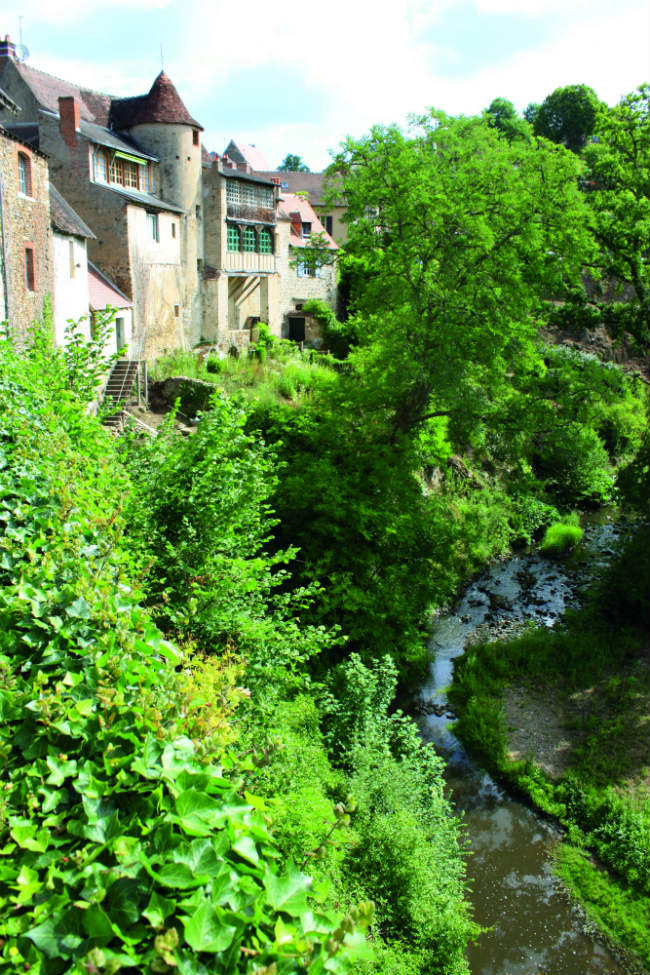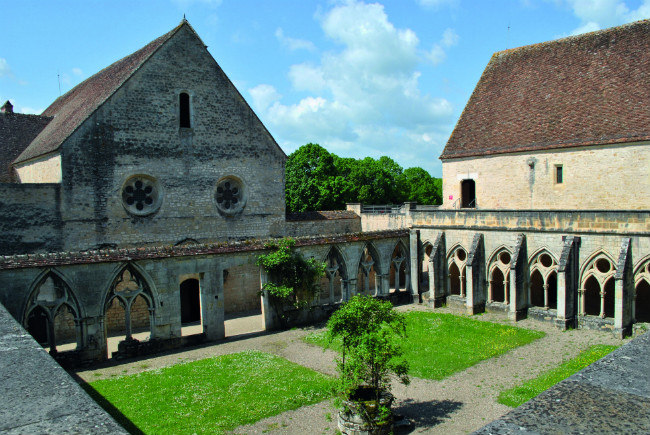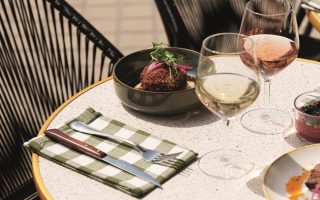Great Travel Destinations: Le Berry, The Green Heart of France

Part of the Centre region, the ancient province of Le Berry offers culture, architecture and countryside. Gillian Thornton made the two-hour journey from Paris
Many visitors to France – not to mention its residents – are still getting their heads around the new administrative boundaries and ‘super regions’. So it’s comforting to know that there are still some historic pockets where the names of ancient regions live on – and are even celebrated. Think Anjou, Gascony, and the provinces of French Basque Country.

The medieval hilltop town of Sancerre, whose lands have been cultivated since Roman times at least. Photo: Fotolia
But think too about the Berry, a name that’s maybe harder for overseas visitors to pinpoint on the atlas. Before 1789, this ancient royal province in the heart of France was governed by a series of dukes, but when the French Revolution swept the aristocracy away, it replaced dukedoms with départements, and with them the romance of a now bygone age.
Today, however, the Berry is alive, well, and positively thriving in the southeast corner of the Centre region. Spanning the départements of Indre in the west and Cher to the east, the ancient province of Berry is a delightfully rural area dotted with glorious gardens, magnificent châteaux and historic towns and villages – all of it just two hours south of Paris.

La Brenne Regional Nature Park. Photo: Fotolia
In the west, the Berry butts up to the eastern border of Poitou-Charentes; in the south, to Limousin and Auvergne; and in the east, to Burgundy, from which it is separated by the liquid boundary of the Allier and the Loire. Between these borders lie picturesque river valleys and protected wetlands, rich farmland, quiet forests, and big-name AOC vineyards.
This is an area where you can’t help but step down a gear, embrace the slow tourism concept, and just relax. But, of course, there is also a wealth of contemporary interactive technology, such as free smart phone apps, to make exploration just that little bit more rewarding.

Gargilesse-Dampierre, one of the Plus Beaux Villages de France. Photo: Gillian Thornton
OUTDOORS IN THE BRENNE
The Parc Naturel Régional de la Brenne lies in the extreme west of the Berry, a landscape of lakes and heathland, woods and meadows, bisected from east to west by the River Creuse. The Brenne covers just 30km by 20km, but is a patchwork of different habitats attracting large numbers of bird and butterfly species, many of them rarely seen in the UK, as well as mammals, insects and reptiles. No surprise then that it’s a haven for birdwatchers, walkers and cyclists.
April, May, June and September are particularly good months for birdwatchers here, but visit between mid-October and mid-March and you should catch some of the grey cranes that stop here on their migration between northern and southern Europe.

Azay-le-Ferron, gateway to the Brenne. Photo: ADTI
You can hire equipment and book guided tours at the Maison de la Nature et de la Réserve at Saint-Michel-en-Brenne. I spent a fascinating afternoon with an expert guide which included a close-up view through powerful binoculars of a perching kingfisher and a group of rainbow-hued bee-eaters flying back and forth to their nests in a sandbank. There’s inspiration too at the Maison du Parc visitor centre in nearby Rosnay, with its multilingual film shows, temporary exhibitions and well-stocked shop.
The Brenne is divided into two contrasting landscapes by the Creuse, the lowland area dotted with lakes to the north and with an area of undulating countryside with deep wooded valleys to the south. Monet and his fellow Impressionists painted in the open air amongst the rocky promontories and river landscapes of the Creuse Valley, and today the area is still popular with artists, photographers and walkers.

View over the town of Sancerre to its famous vineyards. Photo: Fotolia
FAMOUS PEOPLE
South of Argenton-sur-Creuse, I stopped to take in the view of the meandering river from La Boucle du Pin before dropping down into Gargilesse-Dampierre, classified amongst the Plus Beaux Villages de France.
The village flourished in the mid-19th century, when celebrated writer George Sand fell in love with its quaint streets and historic buildings. She often stayed at the Villa Algira, a small, thatched cottage provided by her friend and lover, the engraver Alexandre Manceau. Here she welcomed many creative friends, amongst them a group of artists who became known as the Creuse Valley landscape painters. Today, Gargilesse maintains its reputation as an artistic hub with galleries and exhibitions.

La Boucle du Pin, near Gargilesse. Photo: Gillian Thornton
Born Aurore Dupin to a bourgeois family in 1804, George Sand was largely brought up by her grandmother at Nohant-Vic, just outside La Châtre, around an hour from Gargilesse. After an early marriage and motherhood, she moved to Paris to become a journalist at Le Figaro, taking a man’s name to help her succeed as a novelist.
If you want to know more about this fascinating woman, take a guided tour around Nohant-Vic. Highlights include the room where her lover Chopin composed much of his best work and a bijou theatre where she trialled her plays. Wander her lovely garden; see her grave in the tiny cemetery; and visit the local mills and churches that feature in her work.

Noirlac Abbey is one of the best-preserved buildings of its type in France. Photo: CRT Centre- Val de Loire
Lesser-known outside France is Jacques Coeur, who rose from humble origins to become Superintendent of Finances to Charles VII in the 15th century. His palace in Bourges is opulent proof of the success he achieved before narrowly escaping a death sentence for alleged misconduct, and there are many period properties to visit along the Route Jacques-Coeur, the oldest such tourist trail in France.
Another powerful man who made his home in the Berry was Charles Maurice de Talleyrand-Périgord, Prince of Bénévent and one of the most influential diplomats of the Napoleonic era. Trained in theology and employed as a court cleric, he developed an enviable knack for surviving – and profiting – through changing regimes, from the Revolution to Napoleon and finally the restoration of the Monarchy.
For more than 30 years, Talleyrand entertained overseas heads of state, eminent politicians and all the movers and shakers of the ruling parties at his sumptuous Château de Valençay. Among new visitor attractions installed there in 2017 is a new exhibition gallery and a display of some of Talleyrand’s personal effects.

The Château de Bouges was reinvented in the early 20th century by a man who had made his money in retail in Paris. Photo: J Damase
GLORIOUS GARDENS
The natural landscape of the Berry has been harmoniously complemented by some wonderful man-made plots. The Berry Province website is full of inspiring horticultural destinations to visit, with 11 super-special gardens awarded the prestigious national label Jardin Remarquable, and nine of them also designated among Les Jardins Secrets du Berry. From romantic parkland to flower-filled extravaganzas, contemporary garden rooms to traditional kitchen gardens, they all offer something different, and not just in terms of inspiration and chill-out time. Look out for the various plant festivals, guided tours and outdoor concerts they host.

The 14th-century Château d’Ainay-le-Vieil. Photo: MEB
One of the most unusual of these gardens is the Prieuré d’Orsan, Orsan Priory, a contemporary interpretation of a monastery garden complete with ‘cloisters’ of greenery, medicinal herbs, orchards and much more. Book ahead to enjoy a cold buffet lunch on Fridays, weekends and holidays.
On another day, I toured a very different plot at Ainay-le-Vieil, a beautiful, turreted castle that has been in the same family since the late 15th century. Every collectable inside the château has a personal story to tell – some of the objects were once owned by Marie Antoinette. Beyond the battlements and moat, a collection of themed garden rooms transports visitors from one new world to another.

Apremont-sur-Allier. Photo: P Forget
My third garden visit was different again: the fabulous floral park beneath the hilltop château at Apremont-sur-Allier. Another of the elite Plus Beaux Villages de France, this picturesque collection of honey-coloured thatched cottages could almost be in the Cotswolds, if it weren’t for the broad sweep of the Allier that flows past the village to join the Loire at nearby Nevers. The château is private, but the park is open from April to September; a mix of sweeping lawns and shaped trees, oral overload and ornamental lakes. And in the centre, cute little cottages with gables and balconies form a photogenic focal point with climbing plants and resident cats.

Rue Bourbonnoux, one of Bourges’s main thoroughfares. Photo: Gillian Thornton
CITY BREAK
The first time I visited Bourges, after many years of travelling around France, I couldn’t help asking myself why I’d never been before. Several years on, I still think this delightful ‘Ville d’Art et d’Histoire’, just off the north-south A17 motorway in the east of Berry Province, is one of the Centre’s best-kept secrets.
County town of the Cher département, Bourges is home to a towering Gothic cathedral, now listed by UNESCO and surrounded by flying buttresses that make me wonder, not for the first time, just how they managed that with medieval building technology. If you’re feeling strong, head up the 396 stairs of the bell tower for a panoramic view of the town. If you’re not, admire the five doors, five naves and stunning stained-glass windows from ground level.

Bourges Cathedral. Photo: C Mouton
Step back in time along Bourges’s streets, lined with half-timbered houses and hidden gardens at the foot of the ancient ramparts. Stop and soak up the atmosphere at a café table in place Gordaine, and take a tour round Palais Jacques Coeur, an outstanding example of 15th-century civil architecture. You can’t help but admire his self-promotion through scallop-shell emblems – a play on the Jacques element of pilgrim destination Saint-Jacques-de-Compostelle – and the half statue of him looking out from a carved stone ‘balcony’ above the main entrance.
Visit the city in summer to enjoy Les Nuits Lumières de Bourges, a free light show on major buildings around the town – nightly in July and August, Fridays and Saturdays only in June and September. Just pick up the trail at any point and follow at your own pace. By day, throughout the year, the free Heritage Trail from the Tourist Office is the perfect companion to the city’s rich architectural heritage.

Aerial view of the Bourges Marais. Photo: C Mouton
But my absolute favourite spot in Bourges – and one that many visitors to the city miss – is the Marais de Bourges, a 135-hectare area of allotments and gardens bisected by small rivers and canals, all within sight of the cathedral towers.
Stroll through this car-free haven and you can watch gardeners navigating by small boat, sometimes with dogs and even cats on board. Admire the runner beans, marvel at the dahlias, and just breathe in the very soul of the Berry. The region is a breath of fresh air, whichever way you look at it!

les Nuits Lumières
de Bourges. Photo: Gillian Thornton
A TASTE OF LE BERRY
Agriculture still predominates in Le Berry, so expect slow food to go with the slow tourism. From field to fork, much of the produce will have travelled minimal kilometres to ensure that food is as fresh as can be.

Pyramide de Valençay
GOAT’S CHEESE: Valençay is the only place in France with both a wine and a cheese appellation. Look out for the distinctive Pyramide de Valençay; also the smaller Pouligny- Saint-Pierre; and from Cher, the famous Crottin de Chavignol.
BERRICHON PÂTÉ: Traditionally served at Easter, this pastry-wrapped pâté with a boiled egg at its heart is popular all year round in homes and on restaurant menus.

Le Pâté de Pâques berrichon
GREEN LENTILS: Berry lentils were awarded Red Label status in 1996 and are particularly popular in a salad dish topped with fillets of locally smoked carp.
TRUFFLES: Truffle-growing was decimated by the manpower losses of World War I, but some 60 growers are now reviving the tradition of cultivating tuber melanosporum, otherwise known as the Périgord black truffle.

black truffles. Photo: CRT CENTRE-VAL DE LOIRE
WINES: This is a very diverse region for viticulture. Choose from the seven Centre- Loire appellations: Sancerre, Menetou-Salon, Quincy, Reuilly, Châteaumeillant, Côteaux du Giennois, Pouilly-Fumé and Pouilly-sur-Loire. www.vins-centre-loire.com
From France Today magazine

Green lentils
Share to: Facebook Twitter LinkedIn Email
Leave a reply
Your email address will not be published. Required fields are marked *




REPLY